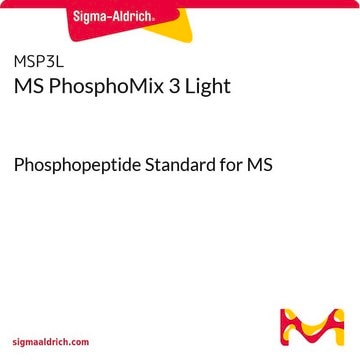MABE1094
Anti-Cdx1 Antibody, clone 123a
clone C, from mouse
Sinonimo/i:
Homeobox protein CDX-1, Caudal-type homeobox protein 1
About This Item
Prodotti consigliati
Origine biologica
mouse
Livello qualitativo
Forma dell’anticorpo
purified immunoglobulin
Tipo di anticorpo
primary antibodies
Clone
C, monoclonal
Reattività contro le specie
human
tecniche
ChIP: suitable
immunocytochemistry: suitable
western blot: suitable
Isotipo
IgG1κ
N° accesso NCBI
N° accesso UniProt
Condizioni di spedizione
wet ice
modifica post-traduzionali bersaglio
unmodified
Informazioni sul gene
human ... CDX1(1044)
Descrizione generale
Specificità
Immunogeno
Applicazioni
Epigenetics & Nuclear Function
Transcription Factors
Western Blotting Analysis: A representative lot detected the target band in CDX1-expressing colorectal cancer (CRC) cells (HT55, LS174T, RCM-1, SK-CO-1), but not in non-Cdx1-expressing CRC (DLD-1, HCT116, SW48, RKO) cells (Chan, C.W., et al. (2009). Proc. Natl. Acad. Sci .U. S. A. 106(6):1936-1941).
Western Blotting Analysis: A representative lot detected the endogenously expressed CDX1 in HCT116 human colorectal cancer (CRC) cells. Antibody blocking with the immunogen peptide, but not with a C-terminal peptide, prevented the target band detection (Chan, C.W., et al. (2009). Proc. Natl. Acad. Sci .U. S. A. 106(6):1936-1941).
Immunocytochemistry Analysis: A representative lot detected a downregulated CDX1 immunoreactivity among SW1222 and LS180 colorectal cancer (RC) cell colonies following prolyl-hydrolase inhibitor DMOG (Cat. No. 400091) treatment as a result of enhanced normoxia HIF-α transcription activity (Ashley, N., et al. (2013). Cancer Res. 73(18):5798-5809).
Immunocytochemistry Analysis: A representative lot detected a high expression of the enterocyte differentiation marker CDX1 among colonies formed from colorectal cancer (RC) cells (SW1222, LS180, CCK-81) under normoxia condition, while a much lower Cdx1 immunostaining was seen among the colonies formed under hypoxia condition (Yeung, T.M., et al. (2011). Proc. Natl. Acad. Sci. U. S. A. 108(11):4382-4387).
Immunocytochemistry Analysis: A representative lot immunostained LS174T and CDX1-transfected HCT116 colorectal cancer (CRC) cells. No staining was seen among mock-transfected HCT116 cells or CDX1 shRNA-transfected LS174T cells (Chan, C.W., et al. (2009). Proc. Natl. Acad. Sci. U. S. A. 106(6):1936-1941).
Chromatin Immunoprecipitation ChIP) Analysis: A representative lot detected CDX1 occupancy at the KRT20 promoter site using chromatin preparation from HT55 human colorectal cancer (CRC) cells (Chan, C.W., et al. (2009). Proc. Natl. Acad. Sci. U. S. A. 106(6):1936-1941).
Qualità
Western Blotting Analysis: 1.0 µg/mL of this antibody detected Cdx1 in 10 µg of human Caco-2 colorectal cancer cell lysate.
Descrizione del bersaglio
Stato fisico
Stoccaggio e stabilità
Altre note
Esclusione di responsabilità
Not finding the right product?
Try our Motore di ricerca dei prodotti.
Codice della classe di stoccaggio
12 - Non Combustible Liquids
Classe di pericolosità dell'acqua (WGK)
WGK 1
Punto d’infiammabilità (°F)
Not applicable
Punto d’infiammabilità (°C)
Not applicable
Certificati d'analisi (COA)
Cerca il Certificati d'analisi (COA) digitando il numero di lotto/batch corrispondente. I numeri di lotto o di batch sono stampati sull'etichetta dei prodotti dopo la parola ‘Lotto’ o ‘Batch’.
Possiedi già questo prodotto?
I documenti relativi ai prodotti acquistati recentemente sono disponibili nell’Archivio dei documenti.
Il team dei nostri ricercatori vanta grande esperienza in tutte le aree della ricerca quali Life Science, scienza dei materiali, sintesi chimica, cromatografia, discipline analitiche, ecc..
Contatta l'Assistenza Tecnica.








